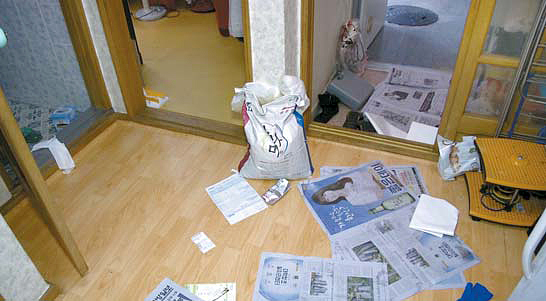‘Lonely deaths’ increase among middle-aged

When police found the corpse of a 61-year-old man in Busan last month, they presumed he died of an illness in February. [SONG BONG-GEUN]
He used to live with his mother, but she was admitted to a hospital for the elderly six months ago. Three months after that, he lost his job as a security guard. Police say he had depression, an alcohol problem and that he rarely left his home.
His cause of death was most likely malnutrition, according to police.
Han is one of 13 godoksa cases in Busan whose bodies were found in June and July days after they had died. Godoksa, or “lonely death,” refers to the death of a person who lives alone and whose body is found days later.
Over half the 13 cases above involved people who were 64 or younger, which is below the legal threshold for being a senior citizen in Korea, defying the common belief that godoksa cases are usually old people.
Four were in their 40s and 50s and nine were recipients of basic livelihood or basic pension funds, meaning they were in the lowest economic brackets.

According to the World Bank, approximately 220,000 people died in South Korea in 2013, which means godoksa cases represented about 0.78 percent of all deaths that year.
Of those 1,717 cases, 499 involved people in their 50s, 292 in their 40s, 157 in their 70s and 32 in their 20s.
Song blames the country’s social security network, which focuses on older adults, as the chief reason that so many godoksa cases involve middle-aged Koreans.
Last year, 27.6 percent of the national population lived alone, up from 23.9 percent in 2010 and 15.6 percent in 2000, according to data from Statistics Korea. The figure is projected to reach 34.3 percent by 2035. To tackle the issue, Busan’s Seo District is planning to expand their so-called “check in with a yogurt drink” service, which requires social welfare workers to visit low-income older adults who live alone every week with yogurt.
The program, which now covers people who are 65 and above, will cover those who are 60 and above from September and those who are 50 and above starting next year.
BY HWANG SUN-YOON [lee.sungeun@joongang.co.kr]










with the Korea JoongAng Daily
To write comments, please log in to one of the accounts.
Standards Board Policy (0/250자)